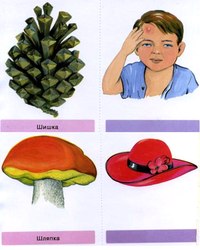Homonymy And Polysemy Are very important meanings in linguistics semantics. If you are a language student, then you must have proper understanding about these meanings. We will discuss about that in the article.
A lexeme is a conjunction of form and meaning. The form is fairly easy to determine: in writing it is a sequence of letters, in speech a sequence Of phonemes. But meaning is more difficult to determine.
In homonyms, such as bank ‘a financial institution’ and bank ‘the edge of a stream,’ pronunciation and spelling are identical but meanings are unrelated. In other pairs, numerous in English, such as steak and stake, pronunciation is identical but spelling is different, reflecting the fact that the words were once different in their phonological form.
English also has pairs of homographs, two words that have different pronunciations but the same spelling; for example, bow, rhyming with go and referring to an instrument for shooting arrows, and bow, rhyming with cow and indicating a bending of the body as a form of respectful greeting.
Lexicographers and semanticists sometimes have to decide whether a form with a wide range of meanings is an instance of polysemy or of homonymy. A polysemous lexeme has several (apparently) related meanings..
The noun head, for instance, seems to have related meanings when we speak of the head of a person, the head of a company, head of a table or bed, a head of lettuce or cabbage. If we take the anatomical referent as the basic one, the other meanings can be seen as derived from the basic one, either reflecting the general shape of the human head or, more abstractly, the relation of the head to the rest of the body.
The Secret Of Homonymy And Polysemy Meaning In Linguistics

Dictionaries recognize the distinction between polysemy and homonymy by making a polysemous item a single dictionary entry and making homophonous lexemes two or more separate entries. Thus head is one entry and bank is entered twice. Producers of dictionaries often make a decision in this regard on the basis of etymology, which is not necessarily relevant, and in fact separate entries are necessary in some instances when two lexemes have a
common origin.
The form pupil, for example, has two different senses, ‘part of the eye’ and ‘school child.’ Historically these have a common origin but at present they are semantically unrelated. Similarly, flower and flour were originally ‘the same word,’ and so were the verbs to poach (a way of cooking in water) and to poach (‘to hunt [animals] on another person’s land’), but the meanings are now far apart and all dictionaries treat them as homonyms, with separate listing.
The distinction between homonymy and polysemy is not an easy one to make. Two lexemes are either identical in form or not, but relatedness of meaning is not a matter of yes or no; it is a matter of more or less.
Examine the different occurrences of the verb ask in the following
sentences:
6 Fred asked Betty where his golf clubs were.
7 Fred asked Donna if she had seen his clubs.
8 Fred asked Charles to help him find his club
Sentences 6 and 7 are about questions, requests for information. The utterances behind sentences 6 and 7 would be something like “Where are my golf clubs, Betty?” and “Have you seen my clubs, Donna?” respectively. Sentence 8 is not a request for information but a request for a kind of action. The utterance behind sentence 8 might be something like “Help me to find my clubs, Charles.” To use a term that we explore further in Chapter 9, a request for action is prospective: the asking naturally precedes whatever action the other person takes. A request for information has no such relation to the information sought; it is about what the addressee may know at the time of asking.
Now, do we have two homonymous verbs ask, or is there just one verb which happens to have two meanings? (We’ll leave aside the possibility of more than two meanings.) Before deciding, it may be useful to look at the correspondences in six languages related to:
English, three Germanic and three Romance:
English ask (for information) ask (for action)
Swedish fråga bedja
Dutch vragen vragen
German fragen bitten
French demander demander
Spanish preguntar pedir
Italian domandare chiedere
If this display shows anything, we can conclude that English ask is a polysemous verb that corresponds to two different verbs in some other languages. The context in which ask occurs determines whether information or a favor is being requested. Therefore, there is no lexical ambiguity.
Homonymy and polysemy are both phenomena related to word meanings, but they represent different concepts. Here’s a tabular guide to help distinguish between them:
| Aspect | Homonymy | Polysemy |
|---|---|---|
| Definition | Words that sound alike but have different meanings and origins. | A single word having multiple related meanings. |
| Origin of Meanings | Different origins for each meaning. | Same origin with meanings that have evolved over time. |
| Examples | – “Bat” (flying mammal) vs “Bat” (club used in sports) | – “Bright” (shining) vs “Bright” (intelligent) |
| Context | Meanings are unrelated and can usually be determined only through context. | Meanings are related and can often be inferred from the context. |
| Word Forms | Same spelling and pronunciation, but meanings are entirely distinct. | Same spelling and pronunciation, but meanings are connected. |
| Etymology | Different etymologies for each meaning. | Common etymology with an evolutionary path of meanings. |
| Usage in Language | Often leads to confusion without context. | Common in everyday language, offering nuance to communication. |
Understanding the difference between homonymy and polysemy is crucial in linguistics, particularly in semantics, the study of meaning. Homonymy deals with words that are related in form but not in meaning, while polysemy refers to a single word that can have multiple, related meanings.
Conclusion
In conclusion, homonymy and polysemy are two essential concepts in linguistics that explain the diverse meanings words can have. While homonyms have the same spelling or pronunciation but different meanings, polysemous words have multiple related meanings. Both phenomena contribute to the richness of language and require careful consideration in our daily communication. By understanding these concepts, we can navigate through the intricacies of words and ensure effective and accurate expression.
